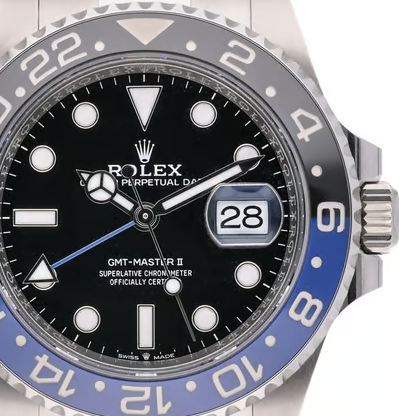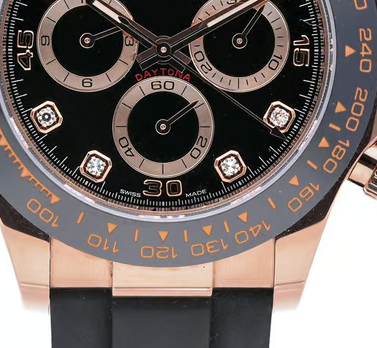If you’re new to the world of watches, you might wonder, "What is a bezel on a watch?" While it might seem like a small detail, the bezel is a crucial part of a watch’s design and functionality. In this article, we’ll explain what a bezel is, explore the different types of bezels, and discuss why the bezel is an important feature in both the form and function of a watch.
Understanding the different types of watch bezels can help you choose the right watch for your needs. Here are some of the most common types:
Diving Bezel
Purpose: Found on dive watches, the diving bezel is typically unidirectional and features minute markings to track elapsed time underwater.
Functionality: Divers use the bezel to monitor dive time and oxygen levels. By rotating the bezel to align the zero mark with the minute hand, divers can easily see how many minutes have passed.
Tachymeter Bezel
Purpose: The tachymeter bezel, often found on chronograph watches, measures speed based on time over a fixed distance.
Functionality: The bezel is marked with units per hour, allowing the wearer to calculate speed by starting and stopping the chronograph function over a known distance.
GMT Bezel
Purpose: A GMT bezel allows the wearer to track a second time zone, making it ideal for frequent travellers.
Functionality: The GMT bezel rotates in both directions and is marked with 24-hour increments. The additional GMT hand on the watch indicates the time in a different time zone, read against the bezel’s markings.
Countdown Bezel
Purpose: Used to track the time remaining until an event, the countdown bezel is common in yacht racing and other timed activities.
Functionality: The bezel is set to show the remaining time until the event, allowing the wearer to see how much time is left as the minute hand moves.
Fixed Bezel
Purpose: Some bezels are purely decorative and do not rotate. These fixed bezels may feature engravings, diamonds, or other embellishments.
Functionality: While fixed bezels do not offer additional functionality, they contribute to the watch’s overall aesthetic and can make the timepiece more visually appealing.

The bezel is more than just a functional component—it’s also a key design element that can greatly influence a watch’s appearance and value.
For example, a robust diving bezel gives a watch a sporty, rugged look, while a diamond-studded fixed bezel adds elegance and luxury.
Moreover, certain bezels, particularly on vintage or limited-edition models, can make a watch more collectible and desirable.
Understanding the bezel’s role can help you make a more informed decision when purchasing a watch and can enhance your appreciation for the craftsmanship involved in watchmaking.
A watch bezel is a versatile tool that can be used in various ways depending on its type.
For a diving bezel, align the zero marker with the minute hand at the start of a dive to track elapsed time and monitor oxygen levels.
A GMT bezel helps you keep track of a second time zone; simply rotate the bezel to align with the additional GMT hand, showing the time in a different zone.
With a tachymeter bezel, start and stop the chronograph over a fixed distance to calculate speed. Each bezel type offers unique functionalities that enhance the watch's practicality.
